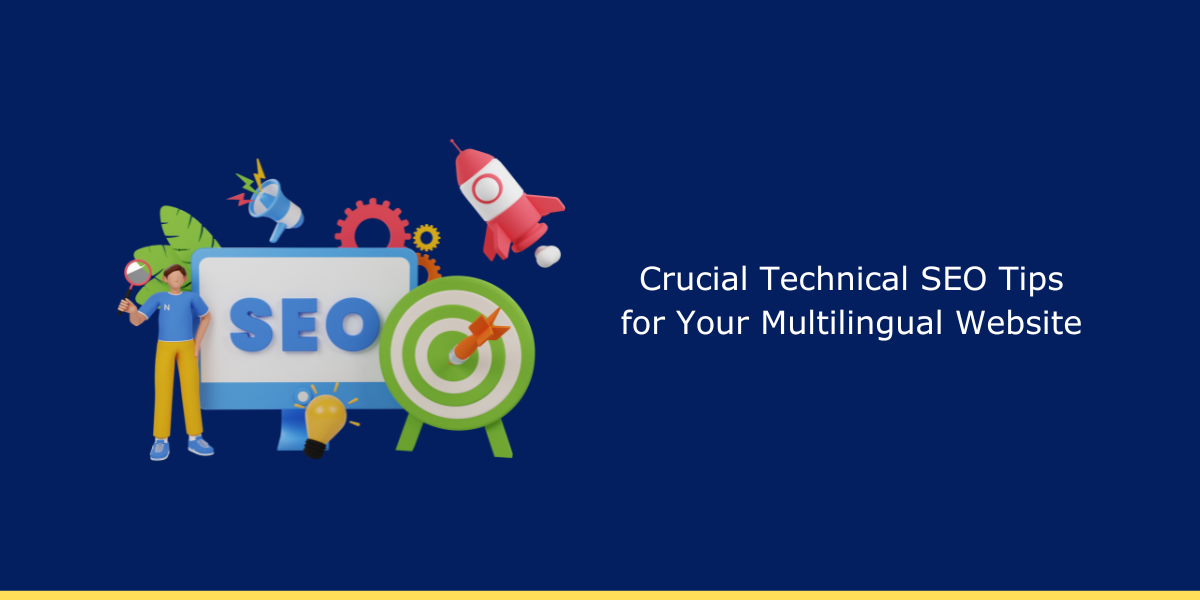
Multilingual websites broaden content across various languages, catering to diverse audiences and their language preferences. This broadened reach aids businesses in engaging a global audience effectively.
However, there’s more to it than meets the eye!
Employing top-notch technical SEO practices unlocks a realm of additional advantages. Businesses can tap into language-specific searches by strategically optimizing various technical aspects enhancing visibility and rankings on search engine result pages (SERPs). This approach effectively captures language-oriented queries, boosting overall discoverability.
This can elevate website traffic, amplifying the likelihood of increased conversions and revenue.
Yet, numerous challenges could affect the performance of multilingual websites.
This article will explore four technical SEO tips to optimize multilingual websites for optimal results. First, let’s explore the primary issues often faced by multilingual websites.
Absence of a Robust URL Structure
URLs are pivotal in guiding the audience through various language versions of a multilingual website, enriching the user experience.
Moreover, they convey crucial information to search engines, aiding in accurate indexing and language-specific targeting.
A proper URL structure can significantly impair user experience and result in accurate indexing.
Inadequate Content Translation and Optimization
Maintaining content’s essence and SEO efficacy across multiple languages poses a challenge for multilingual websites.
Translating content from Spanish to English while integrating pertinent keywords in the respective language presents complexities. Furthermore, literal translations may alter the original content’s meaning, compromising content quality and the SEO strategy.
Duplicate Content Concerns
When search engines encounter identical content across multiple URLs, they might perceive them as distinct pages. This can result in detrimental duplicate content issues, potentially leading to penalties.
Automatic Redirection Challenges
Automatically redirecting users between language versions based on their browser settings might hinder their ability, and that of search engines, to access different iterations of your website.
Technical SEO Tips for Multilingual Websites
Having identified the key challenges, let’s delve into four technical SEO strategies to address them and enhance the performance of your multilingual website:
- Refine URL Structure: Ensure a clear and consistent URL structure across language versions. Establishing a logical hierarchy that guides users through different language iterations enhances navigation and aids search engines in understanding language-specific content.
- Optimize Translated Content: Translate content thoughtfully, retaining context and relevance in each language while adhering to SEO best practices. Tailor keywords and phrases to suit the language’s nuances, removing literal translations that might distort the original message.
- Implement Hreflang Tags: Hreflang tags are crucial. They signal each page’s language and regional targeting to search engines, preventing confusion between different language versions. This ensures users are directed to the most appropriate version according to their language preference and location.
- Offer a Language Selector: A user-friendly language selector aids visitors in choosing their preferred language. Ensure it’s prominently placed and easily accessible. This empowers users to navigate between language versions, enhancing user experience and engagement.
By integrating these technical SEO tips, you can mitigate challenges associated with multilingual websites, improve user experience, and maximize the visibility and effectiveness of each language iteration.
Closing Insights
Implementing the aforementioned technical SEO strategies for multilingual websites will empower you to tackle core challenges, ensuring each webpage boasts optimal structure and optimization.
Beyond enhancing user experience, these tactics streamline search engine discovery and indexing across all language iterations of your website.
Additionally, look beyond technical aspects and delve into the nuances of language-specific search engine behaviors and SEO norms within your target regions.
When considering content SEO, grasp the local culture, language intricacies, and user search patterns. Crafting content that aligns with audience preferences regarding language and relevance delivers substantial value to your target demographic.
If navigating these complexities feels overwhelming, consider exploring our monthly SEO packages and let our team of experts assist you.

